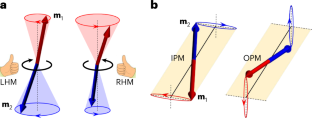2023-05-09 バーミンガム大学
◆この非在来種のハエは、植物の分解速度を大幅に増加させ、土壌中の硝酸塩濃度が在来の無脊椎動物がいる場所と比べて3〜5倍に上昇することがわかった。
◆この侵略的なハエは、南極における他の種の定着にも「扉」を開く可能性があるため、環境保護にも影響する。このハエは、誤って1960年代の植物実験の際にシグニー島に持ち込まれ、その後1980年代にその存在が明らかになった。以前は、ペンギンのコロニーやアザラシの痕跡などと関連した土壌以外に、高い栄養素レベルの陸地は存在していなかった。
<関連情報>
- https://www.birmingham.ac.uk/news/2023/invading-insect-could-transform-antarctic-soils
- https://www.sciencedirect.com/science/article/pii/S0038071723000275?via%3Dihub
南極に導入された単一種の生態学的影響:シグニー島における侵略的ミドリムシEretmoptera murphyiの陸上への影響 Ecological consequences of a single introduced species to the Antarctic: terrestrial impacts of the invasive midge Eretmoptera murphyi on Signy Island
Jesamine C. Bartlett, P. Convey, K.K. Newsham, S.A.L. Hayward
Soil Biology and Biochemistry Available online: 23 January 2023
DOI:https://doi.org/10.1016/j.soilbio.2023.108965

Highlights
•An invasive midge to Antarctica is likely to be increasing soil nitrate availability.
•Colonised soils have a three- to five-fold increase in nitrate compared to uncolonised areas.
•A single insect species is capable of disrupting polar soils with implications for soil development.
Abstract
The nutrient-poor soils of Antarctica are sensitive to change. Recent increases in the number of anthropogenic introductions mean that understanding the impact of non-native species on Antarctic soils is pertinent, and essential for developing future risk assessments and management strategies. Through comparative baseline assessments of vegetation, microbes, soil chemistry, substrate composition and micro-arthropod abundance, this study explored if there are detectable terrestrial ecosystem impacts resulting from the introduction of the chironomid midge Eretmoptera murphyi to Signy Island in maritime Antarctica. The key finding was that E. murphyi is the likely driver of an increase in inorganic nitrogen availability within the nutrient-poor soils in which it occurs. When compared with the levels of inorganic nitrogen present in soils influenced by native vertebrate wildlife aggregations, the increase in local nitrate availability associated with E. murphyi was similar to that caused by deposits from seals and giant petrel colonies. Overall, available nitrate has increased by three- to five-fold in soils colonised by the midge, relative to undisturbed soils. This may ultimately impact rates of decomposition as well as the native plant and micro-arthropod communities of Signy Island.



